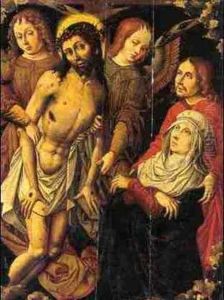Master Of Moulin Paintings
The Master of Moulins, an anonymous French painter and miniaturist active during the late 15th century, is named after the Altarpiece of the Annunciation that he painted for the Cathedral of Notre-Dame at Moulins. His exact birth and death dates are not known, but he is believed to have been flourishing as an artist primarily in the 1480s. The Master of Moulins is considered one of the most significant and skilled representatives of the French School at the end of the Middle Ages, bridging late Gothic and early Renaissance styles. The Master of Moulins' identity remains a subject of scholarly debate, with some speculating that he could be Jean Hey, a painter from the Netherlands who was active in France during this period. Despite the lack of definitive evidence to confirm this identification, stylistic analyses of his works suggest a Northern European influence, combined with an intimate knowledge of Italian Renaissance innovations, indicating a sophisticated understanding of the artistic developments of his time. The Master of Moulins is celebrated for his refined approach to color, delicate portrayal of figures, and detailed representation of fabrics and textures, which demonstrate an exquisite attention to detail and a deep understanding of human emotion. His works are characterized by their serene and elegant compositions, and his skill in depicting the human form with grace and naturalism was exceptional for his time. The Altarpiece of the Annunciation stands as a testament to his mastery, showcasing not only his technical prowess but also his ability to convey complex theological ideas through art. Beyond the Altarpiece of the Annunciation, several other works have been attributed to the Master of Moulins, including portraits and religious scenes, which further illustrate his versatile talent and influence on the art of his period. His legacy is reflected in the continuation of his style by other artists and in the ongoing study and admiration of his work by art historians and enthusiasts alike. The Master of Moulins remains an enigmatic figure in art history, embodying the transition from medieval to Renaissance art in France and leaving an indelible mark on the period's artistic landscape.
